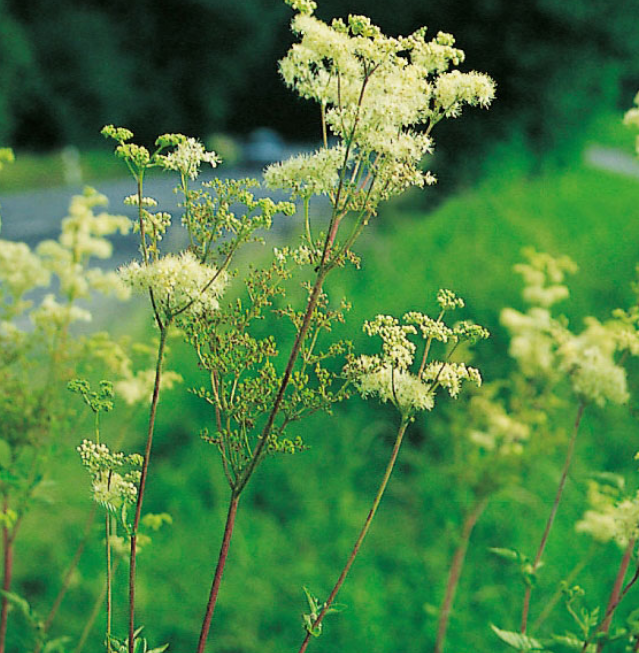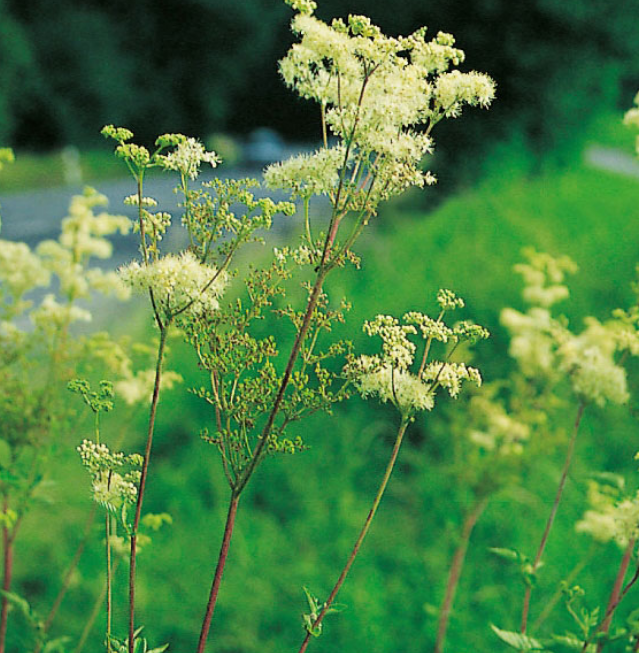Meadowsweet (Filpendula ulmaria)
Meadowsweet (Filpendula ulmaria)
Packet Size: 100 seeds
Couldn't load pickup availability
Meadowsweet (Filipendula ulmaria) is a lovely native wildflower that produces a froth of creamy-white flowers through summer. It thrives in damp spots, forming natural clumps that suit wilder or less formal areas of the garden. The fragrant blooms are a favourite with pollinators, and the plant supports a range of garden wildlife. It also has a long history of edible, medicinal, and dye-making use.
See below for more information — and a note of caution too.
🌸 Flowering: June to September
📏 Height: to 100cm
🌿Perennial
SOW: in spring or autumn, sprinkle a small pinch of seeds into pots of seed compost. Cover lightly with perlite or vermiculite and pop them in a cold frame or a cool, sheltered spot outside. Germination can be slow—anywhere from 1 to 3 months—so be patient and hang in there!
GROW: once the seedlings are big enough, plant them out where there’s plenty of moisture. Meadowsweet loves growing in clumps by streams, ponds, or damp meadow spots. Space plants about 30–40cm apart to give them room to spread. You can divide established clumps in spring or autumn to keep them healthy and looking their best.
📌USES:
Great for wildlife
- Meadowsweet’s fragrant clusters are loved by honeybees (Apis mellifera), bumblebees (Bombus spp.), and various solitary bees for nectar and pollen.
- It supports moth species such as the Emperor Moth (Saturnia pavonia), Scarlet Tiger Moth (Callimorpha dominula), and Fox Moth (Macrothylacia rubi), whose caterpillars feed on its foliage.
- The plant provides habitat and hunting grounds for beneficial predatory insects like ladybirds (Coccinellidae family) and dragonflies (Odonata order), which help control aphids and other pests.
- Meadowsweet is included in the RHS Pollinator Plant List, marking it as highly valuable for supporting native British pollinators.
Natural dye plant (dyeing information will be added as soon as I can – R)
- Meadowsweet on its own gives a warm greeny-mustardy yellow
- Used with iron, it produces a much darker green
- A very dark shade, almost black, can be made from the roots
Culinary use (see caution below)
- If you're not sensitive to aspirin, Meadowsweet can be used in most recipes that call for elderflower.
- Steep the flowers to flavour cordials, custard, ice cream… or added to homemade wine & homebrew
- Flowers can be eaten in salads
Medicinal (see caution below)
- Meadowsweet contains salicyclic acid (now a synthesised ingredient of aspirin)
- Traditionally used to help with rheumatism, gout, colds, fever and digestive issues.
- The scent of the blossom was said to help with headaches
- Meadowsweet tea has a long-standing reputation for easing hangovers
- Please note: we do not promote the medicinal use of plants. Anyone wishing to explore this should seek guidance from a medical professional
Cutting & Fragrance:
- A traditional flower for a brides bouquet.
- Flowers keep their scent well when dried, and are lovely in a pot pourri.
Historical uses
- The name is thought to come from the Anglo-Saxon meodu-swete, meaning “mead sweetener” – used to flavour drinks for centuries.
- A favoured strewing herb for the bedroom floor of Queen Elizabeth I.
- It is one of the traditional plants used for dyeing wool for tartan cloth.
CAUTION - Plants containing salicylic compounds, like Meadowsweet, should be used with care — especially if you are on blood-thinning medication or have aspirin sensitivity.

Collapsible content
Sowing
- Mar
- Apr
- May
Harvesting / Flowering
- Jun
- Jul
- Aug
- Sep

